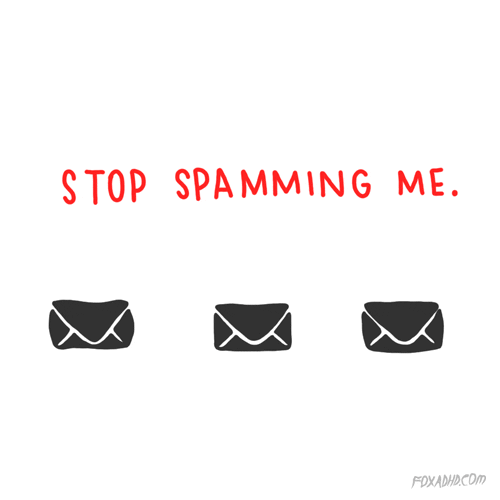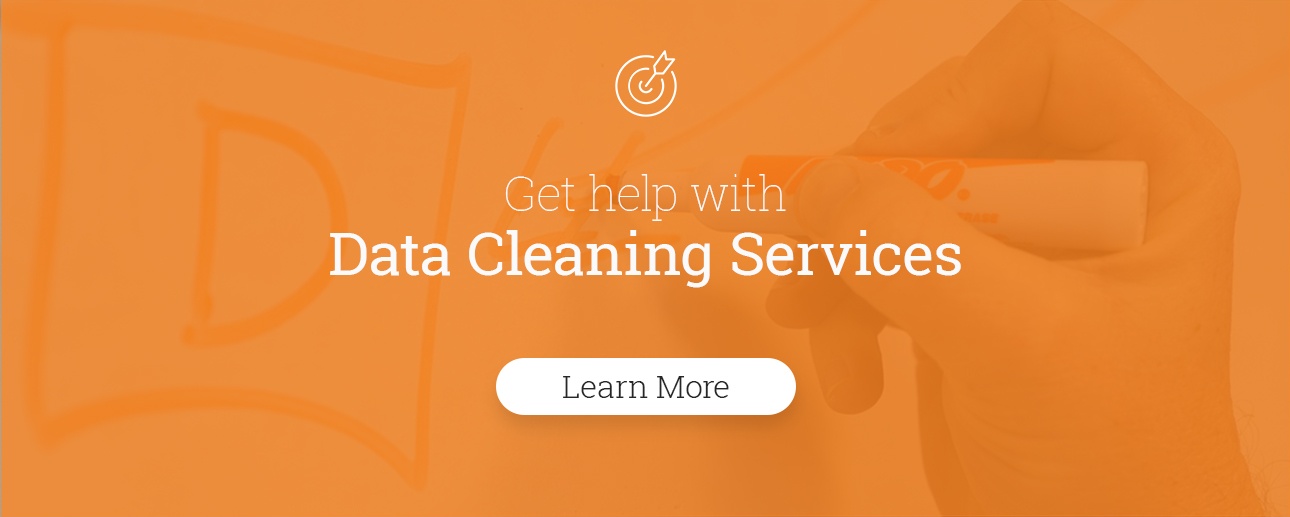Data. It’s a critical part of your business.
It’s also misunderstood. Far too often data is inaccurate (dirty data) or goes unused (disconnected data). It’s time to fix that.
From the success of marketing campaigns and sales initiatives to networking and business growth in general, all aspects of a company rely on data—clean data.
Why do so many companies admit that their databases aren’t clean and yet do nothing about it?

Research from Forbes shows the average CRM data decays at a rate of 30% per year. The impact of this dirty data costs businesses $9.7 million annually. Knowing that your business processes depend on data, freshness and accuracy are vital.
Turning this around could lead to tremendous growth for your marketing efforts. Imagine stronger campaigns, increased customer satisfaction, quality leads, and higher ROI. That’s the benefit to clean data.
Scrubbing Your Data to Direct Your Sales Strategy
How exactly will clean data direct your sales strategy? Let’s take a look at a few examples of what scrubbed data can do for your sales team.
Duplicate Records Lead to Duplicate Emails [SPAM]
If your sales team is sending emails to groups of opportunities, they’re likely sending duplicate emails to the same person.
How often have you visited a website and entered an email, but you forget which email you used? Or maybe you have a secondary “spam” email you use, then input your legitimate email when you want to go deeper with a business.
Either way, you now have duplicate records with that company. So now their marketing and sales automation software will pull both emails into a campaign or an email blast.
The more emails you get from a company, the more likely you are to ignore it or mark it as spam.
Don’t become a victim of duplicate email spam designations. De-dupe your records.

Standardized Contact Information Leads to Efficient Communications
How much do sales people love paperwork?
Even if your contact database is digital, there’s “paperwork” involved.
Whether you input phone numbers like 123.867.5309 or (123) 867-5309 or 123-867-5309 or… you get the idea… you have a ton of choices on how the contact information goes into your database.
When your sales team is busy and rushed, they’ll probably put numbers into records in all kinds of ways.
Plus, some research says up to 30% of records lack complete address information, and 10% of businesses move each year. This affects both deliverability and duplicate search.
If your sales team spends its time correcting non-standardized data, are they selling? Are they happy?

Scrubbed data will direct your sales strategy to move away from administrative tasks like updating records, and focus on revenue generating tasks like selling and networking.
Dirty Data Undermines Decisions
Dirty data lacks credibility, and that means that end-users who rely on that data spend extra time confirming its accuracy, further reducing speed and productivity. Introducing another manual process leads to more inaccuracies and mounting inconsistencies through growing numbers of dirty records.
In addition to the revenue loss, dirty data impacts businesses more insidiously. Only 16% of business executives are confident in the accuracy that underlies their business decisions. Garbage in, garbage out—when you can’t rely on your own data, something needs to be done to increase data accuracy and reliability.
How Do You Scrub Your Data?
Now that you can see how scrubbing your data could direct your sales strategy, let’s dig into how to clean dirty data so you can hit your targets more effectively.
Validate Data Accuracy
One place to start is with an audit of your database to fact-check for errors. If you have multiple points of data entry, compare all of your sources and make sure the information on your database is aggregated.
This can be challenging and tedious. But it’s a critical step in your data scrubbing strategy.
An audit like this will also help pinpoint if a particular source is the cause of your dirty data. Then you can decide how to improve this portal to stop inaccuracy from seeping in.
Identify and Eliminate Duplicate Records
Still on your audit, it’s time to find duplicates and remove them from your database. There’s no point in recording the same name or number twice—it just inflates your email lists and produces erroneous figures in your data analysis. There are data cleansing tools that can perform this step for you in minutes without you having to manually search for copies.
Delete Inactive and Junk Contacts
Albert Einstein. Elmer Fudd. Marilyn Monroe.
noone@nowhere.com. me@you.com. spam@abc.com.
We’ve seen them all, haven’t we? Junk contacts. It’s time to purge them.
Or how about contacts who haven’t interacted with your company in years? Just because you have a database of 10,000 contacts doesn’t mean you have a real audience ready to do business with you.
No sales professional wants to waste time and effort sending emails to spam accounts or dormant contacts.
How do you know if the emails you’re sending out reach actual people? Thankfully, there’s software that can detect dummy accounts. Use these email verification tools to your advantage to improve your sender score.
The sales team should also work with marketing to understand email marketing metrics like open rates and click-through rates, too. If you have a lot of cold leads that aren’t responding to your messages after a certain amount of time, it may be best to let them go and direct your efforts elsewhere.
Keeping bad contacts in your database will only hurt you in the long run—there are costs involved with sending ineffective emails.
Standardize Data Input Processes
In most cases, the root cause of dirty data is inputting incorrect information in the first place. You can’t maintain a healthy database if your process allows for bad leads to funnel in! Ideally, you want to make sure that you have a Standard Operating Procedure (SOP) when it comes to acquiring data to reduce human error. A good standard practice to start is to automate the point of data collection.
Scrub Your Data Regularly
We clean ourselves, our houses and our vehicles regularly. We should do the same for our databases.
Implementing a Standard Operating Procedure will certainly help, but there’s no way to completely prevent dirty data from joining your database.
Whether it’s intentionally fake information given by a customer, an honest mistake, or an oversight from your team, some bad data will slip through the cracks. Regular data cleaning will help manage your database for a better sales strategy.
Set a schedule in a year of how often you want it done. If you’re enterprise-level, you may want to consider doing it a handful of times a year.
Don’t forget to install tools that can help you validate information from the get-go. You can perform this procedure by yourself or hire a company that provides data cleaning services to professionally scrape out the useless data for you.
It’s Time to Clean Your Data!
Following the steps above will ensure that you have the clean data that will drive better results and produce more accurate metrics for your analysis. When that happens, you can perform customer segmentation better, target your customers more efficiently, and maximize your budget.
When performed regularly, you’ll see your ROI increasing in no time—as well as the quality of your sales and business relations. So, if you haven’t thought about data cleaning services yet, it’s about time you did.





